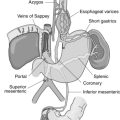5. Acute Porphyria
Definition
Porphyria, in general, is a broad disease category that encompasses eight distinct, related disorders. The acute variants may be characterized by demonstration of abdominal pain, neuropathy, autonomic instability, and/or psychosis.
Incidence
The estimated incidence of acute porphyria is variable. Across Europe, the overall incidence is about 1:20,000; in northern Sweden, the incidence is about 1:10,000. Internationally, the estimated incidence is about 5:100,000.
Etiology
Each acute porphyria variant is produced by an inherited deficiency of a specific enzyme required for progression through the pathway to completion of heme production.
Signs and Symptoms
• Abdominal pain
• Agitation
• Anxiety
• Aphasia
• Apraxia
• Bladder dysfunction
• Confusion
• Cortical blindness
• Depression
• Dysesthesias
• Dysuria
• Encephalopathy
• Fever
• Guillain-Barré–like syndrome
• Hallucinations
• Hyperhidrosis
• Hypersecretion of catecholamines
• Hypertension
• Insomnia
• Mild-to-severe paresthesias
• Motor nerve palsies (especially cranial nerves VII and X)
• Nausea
• Numbness
• Optic nerve dysfunction (may deteriorate to blindness)
• Paranoia
• Partial ileus
• Rhabdomyolysis
• Seizures
• Tachycardia
• Tremor
• Urine color changes to red or becomes very dark when exposed to light
• Vomiting
Medical Management
For the patient with an acute porphyria variant, the first-line intervention during an acute episode begins with removal of any initiating medication or agent. The patient should receive intravenous hydration with carbohydrate-containing solutions, such as dextrose 10%. Abdominal pain should be controlled with opioid analgesics; nausea and vomiting that occurs should be treated with phenothiazine agents. Should these interventions fail to provide symptomatic relief, an intravenous infusion of heme is generally initiated for a period ranging from 3 to 14 days.
If the patient with an acute porphyria experiences seizures, the first intervention should be to determine serum electrolyte concentrations and serum osmolarity as quickly as possible. Acute porphyria patients are prone to develop hyponatremia as well as syndrome of inappropriate antidiuretic hormone (SIADH), either of which can result in seizure. Immediate control of seizures can be achieved with intravenous diazepam or magnesium sulfate to allow time for laboratory tests to be completed and the results transmitted. Correction of electrolyte imbalances may reverse the seizures. If epilepsy is the concurrent cause, seizure control can be safely attained with gabapentin. Rectal administration of diazepam may be necessary to achieve a useful degree of seizure control.
Autonomic instability that may accompany an acute episode can be successfully managed using β-blocking agents. Acute hypertension should be treated quickly to prevent development of undesirable sequelae, such as stroke. Phenothiazine medications, effective against episodes of nausea and vomiting, also help control any psychiatric symptoms that may arise.
Complications
• Adrenergic crisis
• Chronic renal insufficiency
• Hypertension
• Paralysis
• Seizures
Anesthesia Implications
One of the first decisions the anesthetist must make when caring for the patient with an acute porphyria is which drugs may be safely used. Many drugs used by the anesthetist are known or suspected to precipitate an acute episode.
Drugs Known to Precipitate an Acute Porphyria Attack
• Alcohol
• Amphetamines
• Carbamazepine
• Carisoprodol (Soma, Vanadom)
• Clonazepam (Klonopin)
• Cocaine
• Danazol (Danocrine)
• Diclofenac
• Ecstasy (MDMA)
• Ergots
• Estrogens
• Etomidate (Amidate)
• Ketorolac (Acular, Toradol)
• Marijuana
• Methohexital (Brevital)
• Nifedipine (Adalat, Procardia)
• Pentazocine (Talwin)
• Phenacetin
• Phenytoin (Dilantin)
• Primidone (Mysoline)
• Progesterone
• Pyrazinamide
• Pyrazolones
• Rifampin (Rifadin, Rimactane)
• Synthetic progestins
• Thiamylal (Surital)
• Thiopental (Pentothal)
Factors that Provoke an Acute Porphyria Attack
• Alcohol ingestion or abuse
• Cigarette smoking
• Endogenous hormones
• Extreme dieting/fasting/low-to-zero carbohydrate diet
• Infection
• Menstruation
• Psychological stress
• Surgery
Drugs Available to Use in Patients with Acute Porphyria
Nonprecipitating
• Acetaminophen
• Alfentanil (Alfenta)
• α Agonists
• Aspirin
• Atropine (Atro-Pen, Sal-Tropine)
• β Agonists
• β Antagonists
• Bupivacaine
• Codeine
• Droperidol (Inapsine)
• Epinephrine
• Erythromycin
• Fentanyl
• Gabapentin (Neurontin)
• Glucocorticoids
• Glycopyrrolate (Robinul)
• Insulin
• Lidocaine (Xylocaine)
• Mepivacaine
• Morphine
• Naloxone (Narcan)
• Neostigmine (Prostigmin)
• Nitrous oxide
• Pancuronium (Pavulon)
• Propofol (Diprivan, disoprofol [Disphrol])
• Ropivacaine (Naropin)
• Succinylcholine (Anectine)
• Sufentanil (Sufenta)
• Tetracaine (Pontocaine)
Possibly Nonprecipitating
• Atracurium (Tracrium)
• Cimetidine (Tagamet)
• Cisatracurium (Nimbex)
• Desflurane (Suprane)
• Diltiazem
• Isoflurane (Forane)
• Ketamine (Ketalar)
• Lorazepam (Ativan)
• Metoclopramide
• Midazolam (Versed)
• Mivacurium (Mivacron)
• Nitroprusside (Nitropress)
• Ondansetron (Zofran)
• Ranitidine (Zantac)
• Rocuronium (Zemuron)
• Sevoflurane (Ultane)
• Vecuronium (Norcuron)
Preoperatively the anesthetist must focus on several aspects of the patient’s condition. Fluid and electrolyte balance should be well documented before surgery and anesthesia. An imbalance of either should be corrected before anesthesia is initiated. Hyponatremia is frequently associated with development of seizures. The patient’s muscle strength and cranial nerve function must be assessed. Both may affect the patient’s ability to maintain respiratory function postoperatively without artificial assistance.
On the day of the operation, the patient with acute porphyria should have fluid and caloric intake restrictions shortened to the least amount of time considered safe to provide anesthesia. Prolonged restrictions may trigger an acute attack. The impact of the necessary restrictions may be eased somewhat by infusing glucose-containing, electrolyte-balanced solutions after securing intravenous access. The patient must also receive an anxiolytic premedication to reduce anxiety and stress, which can also precipitate an acute attack.
General anesthesia can be safely administered to the patient with an acute porphyria; however, this technique does significantly increase the potential of an acute attack. Both propofol and ketamine have been used without incident in patients with acute porphyria. Once general anesthesia is induced, the patient can be maintained using any of the volatile inhalational agents currently available. Regional anesthesia is also a safe, viable technique for the patient with acute porphyria. Each of the available local anesthetics, such as lidocaine and mepivacaine, has been used without negative effects with regard to the patient’s porphyria. However, there are contraindications to regional anesthesia, including unstable hemodynamics, reduced mental capacity, and/or confusion.
The anesthetist must be alert for signs and symptoms of an acute porphyria attack. These can be subtle in the patient who is already receiving general anesthesia. The anesthetist must watch for the sudden appearance of tachycardia and hypertension that may be inappropriate to the degree of surgical stimulation and that are minimally responsive to administration of an opioid analgesic and/or increased volatile inhalational agent. In such circumstances, initial treatment may be administration of a β-adrenergic blocking agent. The anesthetist may confirm the suspicion of an acute attack by testing for increased levels of porphobilinogen (PBG). During an acute attack, urinary PBG may be 20 to 200 mg/mL. Trace PBG kits are commercially available that can detect levels of ≥6 mg/L to confirm the suspicion. The anesthetist must simultaneously initiate measures to ensure adequate hydration and provide some carbohydrate intravenously. It would be prudent to add a dextrose-containing solution to an existing intravenous line or start a dedicated line.
Prevention of nausea and/or vomiting should be undertaken as well. The anesthetist should insert a nasogastric tube to evacuate the stomach contents and keep it empty. This symptomatic pain should be attacked pharmacologically by administration of a phenothiazine agent or ondansetron for the patient who is particularly sensitive to the extrapyramidal effects of phenothiazines. If a seizure ensues, particularly in a patient with a regional anesthetic, diazepam is quite useful in interrupting the seizure activity. On confirmation of an acute attack, the anesthetist should initiate treatment with the single available treatment medication, hemin (in the United States). Hemin corrects the heme deficiency and suppresses the concentration of porphyrin precursors. The dosage is 1 to 4 mg/kg/day and should be infused over 10 to 15 minutes. The dose may be repeated no more frequently than every 12 hours and the maximum daily dose cannot exceed 6 mg/kg/day. This treatment regimen should be continued for 3 to 14 days.






